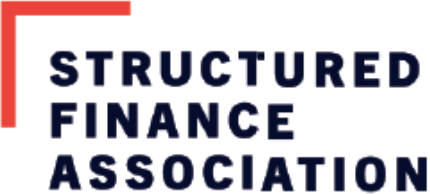SFA Responds to Fed LIBOR Proposal, Recommends a Few Imperative Clarifications
article by Structured Finance Association
Background:
On, August 29, 2022, the Structured Finance Association (SFA) submitted a letter to the Board of Governors of the Federal Reserve System (Fed) in response to the Fed’s Proposal implementing the Adjustable Interest Rate (LIBOR) Act. Congress enacted this Act earlier this year, with instrumental leadership from SFA, easing the transition away from the London Inter-Bank Offered Rate (LIBOR) to a robust replacement rate. Consistent with the law, the Fed’s Proposal will replace references to LIBOR in certain contracts with the applicable Board-selected replacement rate after June 30, 2023.
SFA is strongly supportive of the proposal, with a few imperative remaining clarifications needed in order for consumer and investor contracts to transition as seamlessly as Congress intended. The areas of needed clarification and SFA’s provided recommendations on how the Fed may address these concerns are explained below.
Key Points:
- For derivative transactions linked to certain securitizations, the board-selected benchmark replacement should be the same as for the related securities. SFA recommends that a narrow subcategory of LIBOR contracts known as “Structured Finance Swaps” be created to avoid any unintended consequences, disruptions, and operational challenges as well as to preserve economics.
- Any publication of Synthetic LIBOR could create confusion regarding its applicability to contracts transitioning under the LIBOR Act and so SFA recommends that the Fed unambiguously state that Synthetic LIBOR is not an appropriate benchmark replacement for these contracts.
- In response to the Fed’s question on whether it should address ambiguity regarding contracts that fall back to a specific non-LIBOR benchmark replacement (i.e. Prime rate), SFA does not believe the Fed should address contracts not within the scope of the LIBOR Act.
- Credit card issuers were provided a clear path to transition their LIBOR-based credit card agreements to another index before LIBOR becomes unavailable under CPFB’s amended Regulation Z (which was also included in Section 104(f)(6) of the LIBOR Act). SFA encourages the Fed to acknowledge this section and CFPB amendment in their final rule to avoid any ambiguity.
- SFA membership finds the Proposal’s “covered” and “noncovered” categories to be unnecessary and conflicting with the treatment of LIBOR contracts under the LIBOR Act. Therefore, we recommend that the categories be removed from the final rule to avoid any inconsistencies.
- The Proposal lacks a limited number of necessary conforming changes regarding how payments will be calculated in connection with the board-selected benchmark replacement in order to avoid litigation in the future. SFA recommends a limited set of these that may be found in Appendix II of our letter.
- Regarding “Eurodollar” deposit rates, SFA recommends that the Board remove any ambiguity in the Proposal by stating that references to polls, surveys or inquiries for “Eurodollar” deposit rates are nullified by Section 104(b)(2) of the LIBOR Act.
- Also with regards to Eurodollar, SFA asks the Fed to confirm that determining persons can rely on Section 104(c) of the LIBOR Act to select the board-selected benchmark reference in connection with Eurodollar Lending Rate Transactions.
- The Fed also asks in their Proposal if notice requirements are necessary. SFA explains any notification requirements would create confusion and inconsistency with existing statutory and regulatory requirements. Therefore, no notice requirements should be included in the final rule and market participants should continue ongoing efforts to mitigate any notification process operational barriers/burdens.

